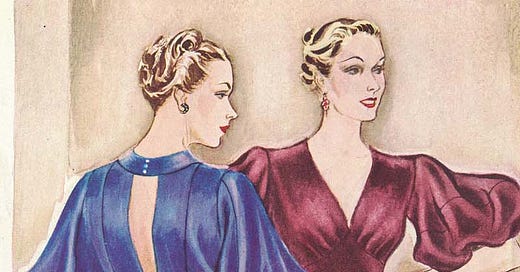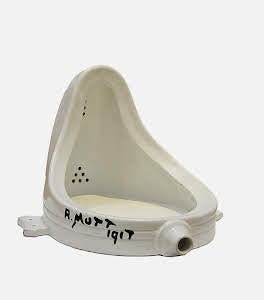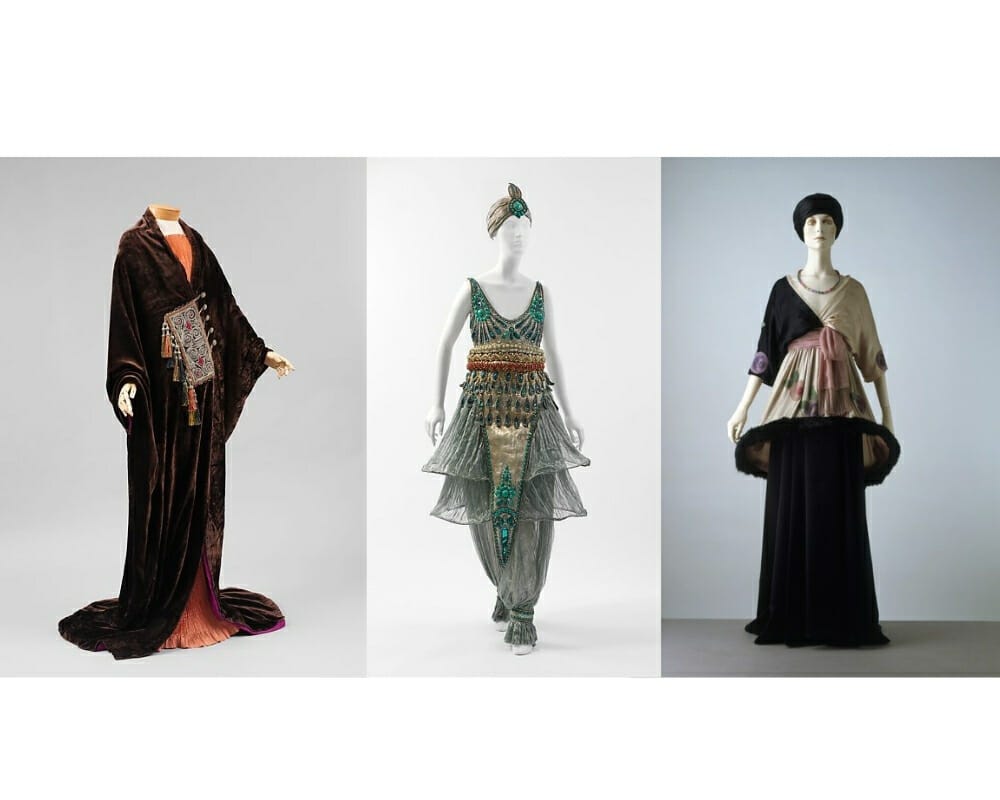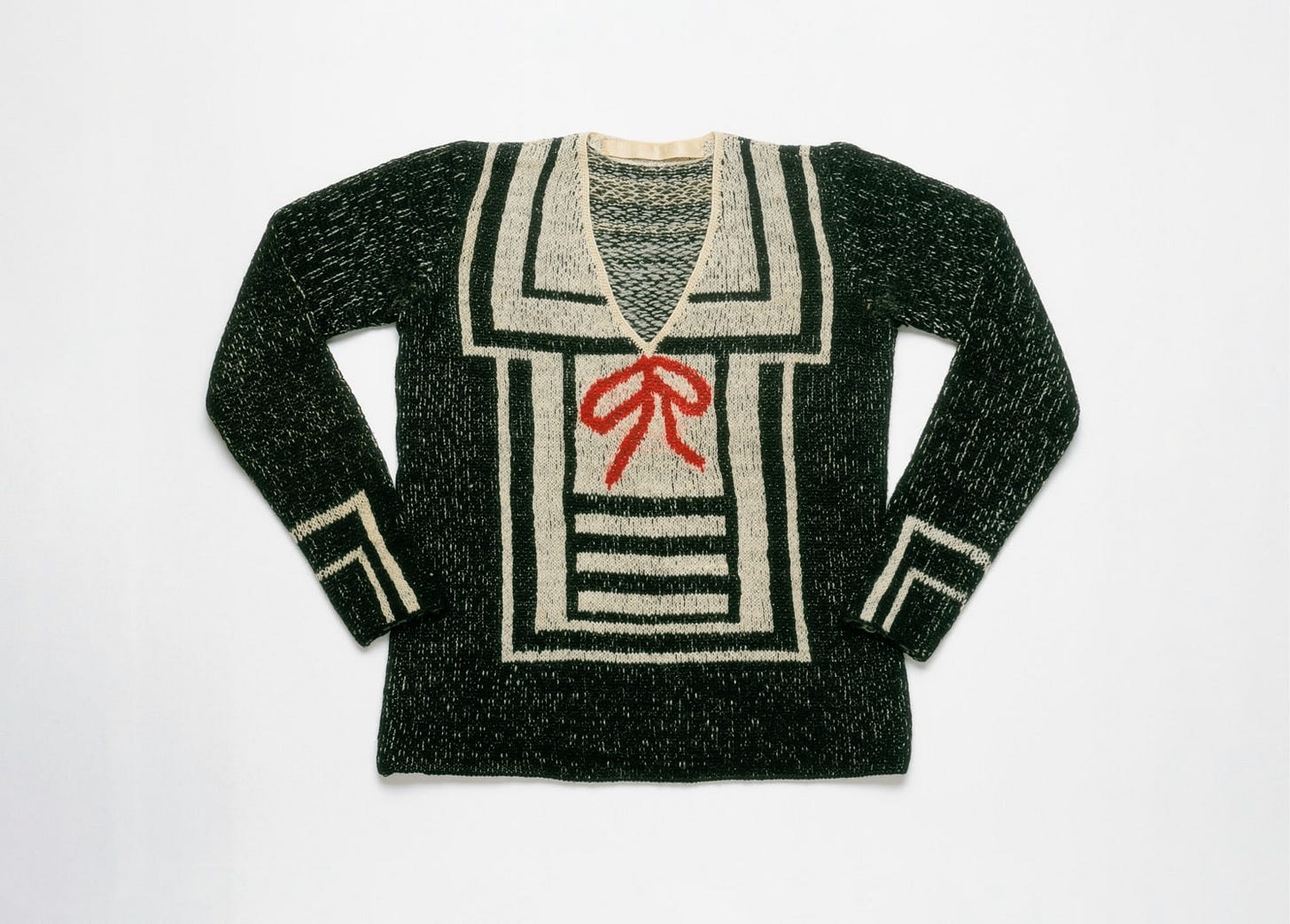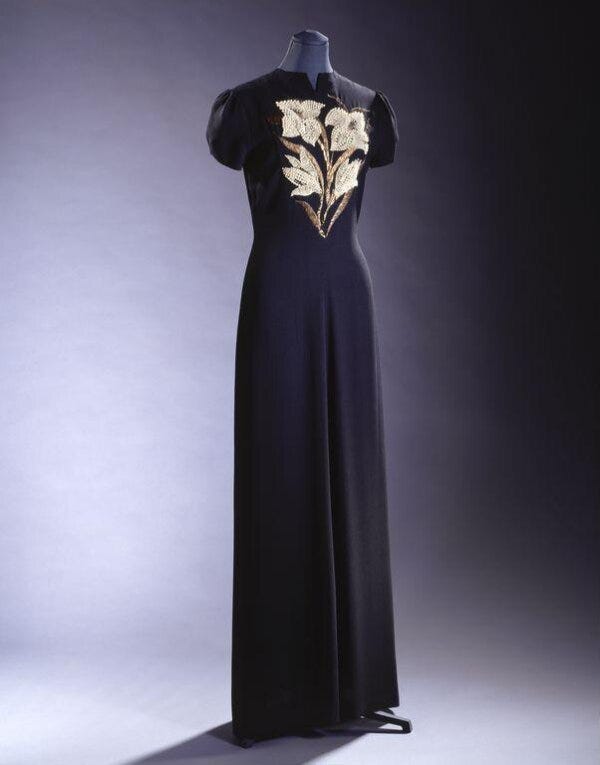What's the Story Behind Elsa Schiaparelli's Surrealist Fashion?
Unveiling the Enchanting World of Elsa Schiaparelli's Surrealist Fashion!
What's the Story Behind Elsa Schiaparelli's Surrealist Fashion?
Does art need to mean something? We all recall those overly pretentious English lectures where we needed to decipher the hidden meanings in every brushstroke or metaphorical twist.
While analyzing art can certainly deepen our appreciation, it often begs the question: 'Must every stroke of the artist's brush or every note in a composer's symphony hold a profound message?
More than that, isn’t the absence of meaning something precious itself?
A 3-year-old can grab 2 crayons and draw squiggles on his wall all day long and not feel self-conscious, not feel insufficient. Because a 3-year-old does not know what “art” is.
A 5-year-old can write an entire poem with just “dadas” and “mamas” in it and feel proud of his creation. Because a 5-year-old does not know what “literature” is.
There is a reason why children, especially the really young ones, are so bloody creative. Because to them, creativity and art are to just create.
I believe that this idea, the notion that the purpose of art extends beyond its outcome, is what truly underlies surrealism.
I don't dream often. And when I do, they are just really bland, boring dreams that are forgotten 3 seconds after my brain wakes up. But once in a while I would have a dream that is just so weird and outlandish it becomes impossible to forget. It glues itself to the walls of my mind and never lets go.
One such dream has me playing golf, with my dad, at Willy Wonka’s chocolate factory.
It has me playing golf with my dad at Willy Wonka’s chocolate factory where the golf balls were the heads of those strange little oompa loompas.
I had this dream for the first time 5 years ago and the only reason I still remember it is because of just how abnormal it is.
The strange and the peculiar need to have their place in art.
SELF EXPRESSION v/s MEANING
I need to gush about Dadaism.
Does art need to have meaning? Every sentence here is created correctly to make sense. But that necessary is?
If art is all about self-expression, they should art also almost never make sense.
Cuts, hemlines, stitch patterns - fashion has a lot of rules. These rules can vary depending on cultural, historical, and personal factors, and they often contribute to the uniqueness and creativity of the fashion industry.
They can also, very very easily, become predictable.
Surrealist fashion is a style of fashion without any rules.
“In difficult times, fashion is often outrageous” - Elsa Schiaparelli
Elsa Schiaparelli will forever be known for her idiosyncratic and distinct pieces. And it is quite evident where her surrealistic style came from.
But before we discuss Elsa, we should discuss Dadaism.
Dadaism was a fascinating art movement that started after the First World War. The primary message of Dadaism was - that art does not have to have any meaning.
Dadaism was first created in a club named “Cabaret Voltaire” in Zurich, Switzerland. But it quickly spread around the world. After Zurich, Dadaism found its way to Paris, Berlin, and New York City.
It was in New York that Elsa Schiaparelli was first introduced to the surrealist movement. She very quickly found herself in the social circle of world-renowned dadas like Man Ray and Marcel Duchamp.
It should be noted that all of this happened well before Elsa Schiaparelli even began designing clothes. It was years later, in another city, that these surrealist ideas were first turned into clothes.
LIFE BEFORE PARIS
Elsa Schiaparelli, born in Rome, Italy, in 1890, hailed from a prominent family. Artistic influences marked her early life, as her father was a well-known professor of archaeology, and her mother was of Neapolitan nobility.
I’ll just blitz through life before Paris, you can read about it in more detail here.
Elsa visited London with one of her sister’s friends to take care of her children. There she attended a conference on theology by Count Wilhelm Wendt de Kerlor. This man, this man was a “theologist” who got visions of God.
Visions of God are never good, but these skills apparently worked very well against Elsa, who very quickly fell in love with the conman.
(Yes, de Wendt's profession was that of a tireless, inventive self-promoter, in reality, a con man who claimed to have psychic powers)
They married in 1914 and left London for New York in 1916, after spending several seasons in Nice. For the next few years, the couple lived completely off of Elsa’s marriage dowry (yes those were still very much a thing!)
In 1920, Elsa had a daughter named Yvonne, nicknamed Gogo who contracted poliomyelitis. By then Elsa Schiaparelli was basically a single mother and it was becoming very difficult for her to manage and juggle everything in her life.
So she moved to Paris in 1922.
LIFE IN PARIS
Paris has been and continues to be the place to be for fledging fashion designers. And Elsa, who worked at an antique shop during the day, quickly charmed her way into the circle of artists and creatives.
At the restaurant Le Bœuf sur le Toit, the de-facto place to be for the smart and the stylish, she first met Paul Poiret.
Paul Poiret is a legendary couturier, regarded as the best of his age. He also seemed to have an eye for the unique. Elsa and Paul quickly developed a friendship resulting in Elza borrowing and unofficially modelling his clothes.
This friendship, and these cultural impacts combined with Elsa’s innate atypicalness made Elsa Schiaparell’s designs what they were.
THE FIRST …. JUMPER?
It is a tad mad to think that this, this jumper was the first thing Elsa Schiaparelli designed. It was called the trompe l’œil and was created in 1927.
It is also very difficult to know how against- the-grain it was compared to what was traditional at the time.
Women’s fashion in the 1930s was all about curves. The decade before the 1930s was, as you may have guessed, the 20s. The roaring 20s.
The 20s are iconic for their short hemlines and straight waistlines. The 30s, and maybe this was because of the famous stock market crash of 1929, reverted back to feminine curved silhouettes.
THE SEVERE EVENING GOWNS
While Elsa Schiaparelli is primarily known for her outlandish, surrealist designs, it’s her evening attires that get the most love.
Her evening dresses were known for their originality, inventiveness, and unconventional themes. Schiaparelli incorporated various themes into her evening dresses, including erotic fantasy, traditional and avant-garde art, and her own psyche.
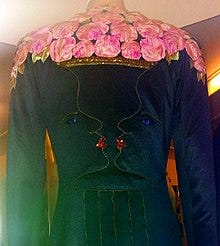
Her repertoire of inventive devices included experimental fabrics, bold prints, opulent embroideries, outsized and exposed zippers, and distinctive accessories.
This topic is way too big to go into here, and way too important to not care about. So I encourage you to read more about Elsa Schiaparelli’s evening wear from here.
THE LEGACY
From her atypical life to her atypical design, Elsa Schiaparelli changed fashion and instilled a creative spirit in 20th-century fashion with her inventive imagination and revolutionary vision.
There are many designers like Coco Chanel, who are renowned for their simple and elegant designs. But fashion seems to also need and adore designers like Schiaparelli who never do things by the book.
To be honest, 1300 words are far too few to describe the life of someone as truly unique as Elsa Schiaparelli but I gave it a shot.
Let me know if you’d like these sort of posts more :)


